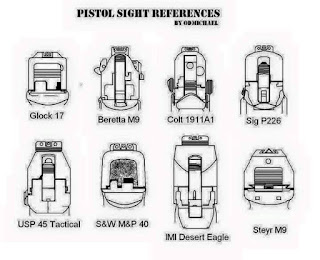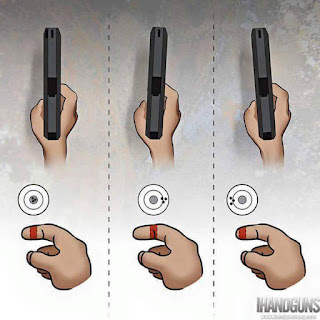Kel-Tec RDB Review–America’s 5.56 Bullpup

The gun is less alien looking that most of the other bullpups on the market.
Specifications
- Caliber 5.56mm NATO
- Magazines AR Stanag
- Barrel Length 17.4″
- Overall Length 27.4″
- Weight Empty 7 lbs.
- MSRP $1272.73

Slim, trim, compact…. The RDB is also one of the smallest, lightest bullpups available.

The rounds eject from the gap here between the butt and the magazine.
Kel-Tec has tackled this dilemma before. The RFB (Rifle, Forward-ejecting, Bullpup) collects brass inside the frame and spits it out the front. I’ve spent some quality time with the RFB. One of the fun things about that gun is shooting, then tipping the gun forward so the empties can spill out. It is the mic-drop equivalent of the gun world. But the design never really caught on, and many had reliability issues with the gun.
Reliability in any gun design is really important. If you get a jam in a bullpup, clearing it can be a bitch. Even if you are a wizard with an AR, getting your fingers up inside a bullpup (especially a hot bullpup) can take you out of the fight. But this downward brass dump seems to run without a hitch.
Ergonomics
The RDB was developed to be fully ambidextrous in every way shape and form. Starting at the back, the RDB has ambidextrous sling mounting points, bolt releases, a centrally located magazine release, 45-degree-throw safeties, a left or right-side interchangeable non-reciprocating charging handle, and even ambidextrous forward sling mounting points.
The mag release is a piece of spring steel that wraps around the mag.

The safety, easy to find with the thumb.
Best of all, the RDB doesn’t punish the shooter with recoil or muzzle rise and I have to think this is partially due to its caliber and adjustable gas system.

Gator grip.

The gas tube sits about where it would on a carbine length AR, but this system is adjustable.
Shooting The RDB
Running the RDB isn’t like any other rifle I’ve ever fired. It’s the abundance of ambidextrous controls and the downward ejection of spent cases that will seem unusual at first. I’ve got a lot of trigger time on my Tavor, so I’m used to bullpups, but learning a new set of controls and behaviors always takes time.Still, from what I’ve seen so far, the RDB is worth the steep learning curve. The ambidextrous controls allow for a lot of flexibility, the long barrel in the short package gives the RDB better ballistic potential than many AR-15s, and it weighs in at just 7 pounds.
The gun ships with one 20 round Gen 3 P-mag and is capable of using just about every AR style magazine on the market. I found that the Gen 3 P-mags ran flawlessly but were sluggish to drop free with the bolt locked back to the rear. These dudes are light when empty, and wider than a typical steel or aluminum AR mag. They can get sticky in most guns, which is why AR shooters have developed that wrist-snap motion to sling them free of the mag well.
I have confirmed that these will drop free: Lancer, USGI, Hexmag, E-Lander, Gen2 P-Mag, and the Fab Defense Ultimag. This is important, as the mag is under your shooting arm and there’s less room to manipulate the gun.

The Primary Arms red dot.

The
barrel, with rail attached. This method of mounting the rail gives more
stability than you would get from mounting the rail to the polymer
parts.
Accuracy
Why do most shooters struggle with bullpup accuracy? There can be a number of reasons. Some have sub-standard, or heavy trigger systems. Placing the barrel farther back means a reduction in sight radius for those using irons. And then some of the barrels themselves aren’t free-floated. But non of this matters for a rifle that is incredibly maneuverable, fast to the target, and optimized for close-quarters combat distances. Or at least that’s the list of excuses for poor accuracy.
5 in under an inch. This was shot with a Primary Arms 1-6 from 50 meters.

5 under two inches from 100 meters, from the bench. This group would be much tighter but for the one flier.
I was consistently shooting sub 1.5 inch groups at 50 meters and right at 2 inches at 100 meters with a Primary Arms 1-6 scope.

The
polymer trigger has one spring is exposed. This is the one obvious
point of concern for me, as an exposed spring picks up grit and grime.
It clears it out, too. I had no issues with it, but it is an unusual
design choice.
Problems with the gun?
No gun is perfect. In fact, most guns I own and love have quirks about them. The RDB is no exception. In my testing, I found the reliability was solid and the gun worked well from round 1–no awkward break-in period needed. My malfunctions occurred when trying to make mag changes too fast. You have to take things slow at first to get used to working in a space that’s far less accessible than the mag well on an AR. The only true malfunctions happened while I was tuning the gas system, and those are–without question–warranted.How would the RDB fair in a much longer testing period? I shot 750+ rounds of ZQI SS109 and Wolf Polyformance for this review, so I can’t say for sure. I have no reason to doubt that it won’t keep chugging along.
So what are the points of concern? What I’m seeing has less to do with the gun itself, and more to do with the bullpup philosophy. When a malfunction happens–like a double feed or a failure to extract–you must clear the issue to stay in the fight. If you aren’t practicing these skills, but relying on your gun to work as advertised, than you’re missing an important step.
The AR and AK put the chamber and mag well right in the center of the rifle. When you bring the gun in to your chest, both hands have access to everything that’s important. Strip the mag, rack the bolt (multiple times), jam a finger up in gun if there’s still a problem.
With the bullpup, you give up that convenience and problem solving speed.
America’s bullpup
There’s one other detail worth noting. The AR-15 is the definitive black rifle, at least in this country. In its short barreled format, the rifle is compact enough. Yet most of the guns are still carbine length, or longer. This extra length, many think, is a deterrent to effective maneuverability.That’s the motive behind the bullpup movement. A short-barreled AR loses some of the 5.56’s punch. So why not leave the full length barrel in place and just scoot the whole action back into the stock? What would you lose? The only answer seems to be–as I mentioned earlier–the problem solving and the ergonomic advantage of reloading.
The best known bullpup here in America isn’t an American gun. The IWI Tavor is the reigning champ. Though the Tavor is compact (in terms of length), it is hardly slim. Part of the Tavor’s diehard reputation has grown from the serious strength of the gun. The AR, by contrast, seem skinny. The AR (and, to a lesser extent, the Tavor) has a proven track record.
The RDB combines the two ideas. The gun is more narrow. The frame, though polymer, doesn’t feel as large in the hand, and the design maintains a visual aesthetic that will be familiar to those who know Kel-Tec. Will it stand up to abuse like a Tavor or the AR? The verdict on that is still out.
But the RDB does have an American pedigree. While Kel-Tec has included a long stroke piston design that is vaguely similar to some Russian designs, it is American–all the way.

The muzzle brake and a ridge of polymer to use as a hand stop.
Price and Availability
The RDB is in production and available now. They are normally available online, but–like all Kel-Tec products–there is a serious demand, so they will normally bring a premium and be somewhat hard to find. My advice is to be patient and check often.Where will that $1.2K price settle out? After the demand subsides, and the market levels out, I’d guess the gun will sell for closer to the $1,000 mark.
The Kel-Tec RDB is truly a unique firearm that is building quite the reputation for itself. Is it going to replace my go-to fighting rifle? I can say this; it hasn’t missed a range trip yet since I picked it up.

The gun is easy to break down and service.

The mag release paddle is central on the frame, while the bolt release (the small trapezoidal lever) is on both sides.

The hand-guard.

Push the pins through to take it down.

The upper, assembled.

The bolt carrier contains the recoil spring–the thin plunger sticking out the back end.

The stock/bolt cover.
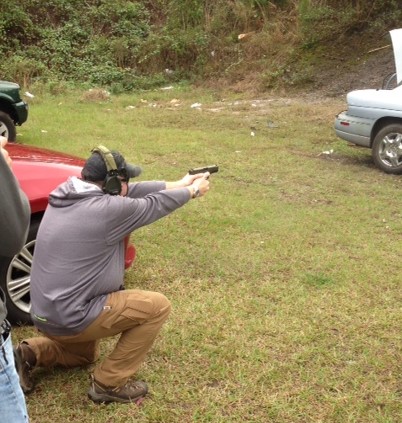
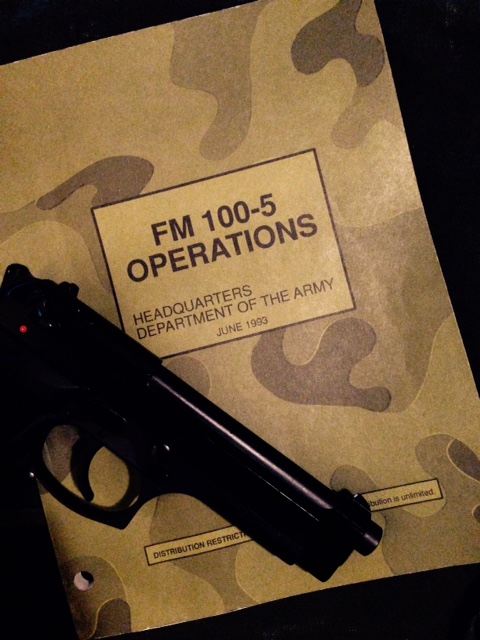
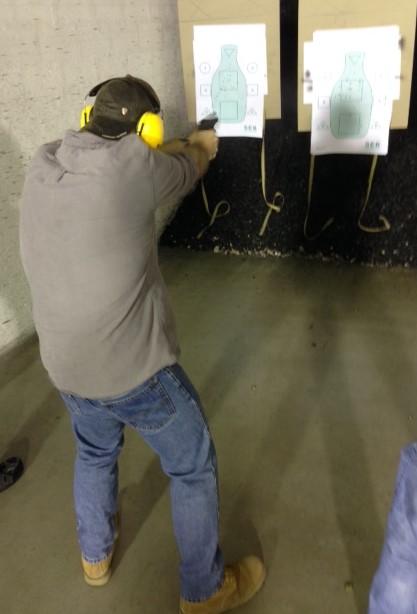
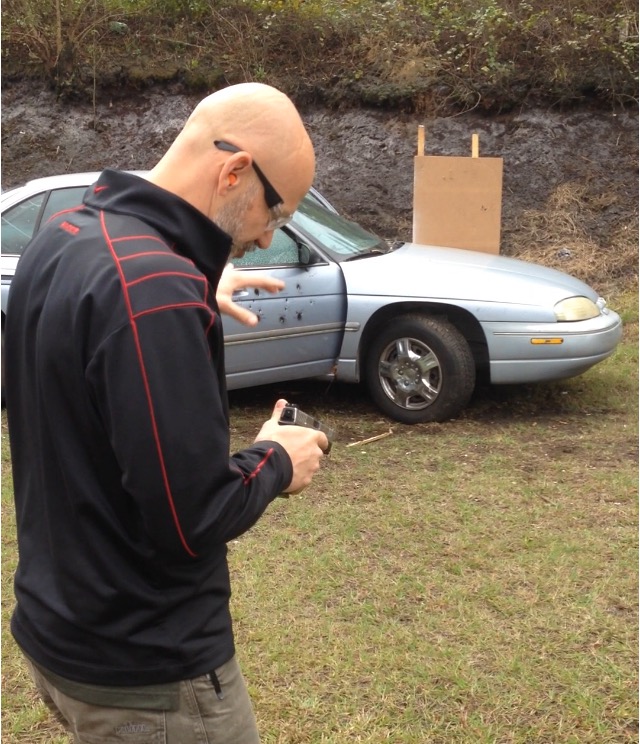

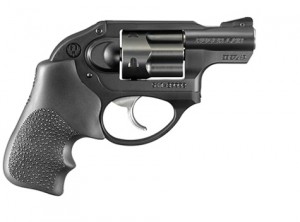 The
Ruger LCR gets high marks for shooters with low hand strength. The LCR
stands for “Lightweight Compact Revolver” which would lead you to
believe it fits at least a few of our criteria right off the bat. It
does.
The
Ruger LCR gets high marks for shooters with low hand strength. The LCR
stands for “Lightweight Compact Revolver” which would lead you to
believe it fits at least a few of our criteria right off the bat. It
does.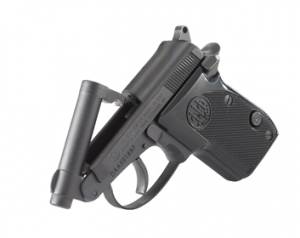 The
Beretta Bobcat is another compact and lightweight entry for seniors who
may have difficulty racking a slide or holding a heavy handgun steady
on target. Designed to serve as a lightweight pocket gun, the Bobcat
naturally solves many of the issues facing seniors.
The
Beretta Bobcat is another compact and lightweight entry for seniors who
may have difficulty racking a slide or holding a heavy handgun steady
on target. Designed to serve as a lightweight pocket gun, the Bobcat
naturally solves many of the issues facing seniors.
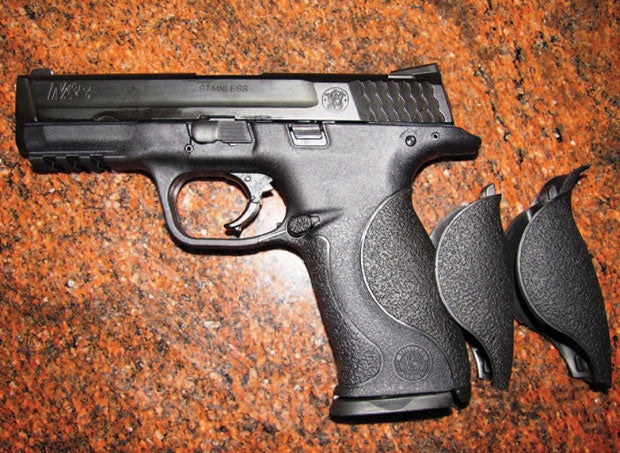 The
M&P series is well-known for delivering a high bang-for-the-buck
factor. For those with arthritis and or other issues that may affect
their grip strength, the M&P also offers adjustable back straps to
better fit your hand.
The
M&P series is well-known for delivering a high bang-for-the-buck
factor. For those with arthritis and or other issues that may affect
their grip strength, the M&P also offers adjustable back straps to
better fit your hand.
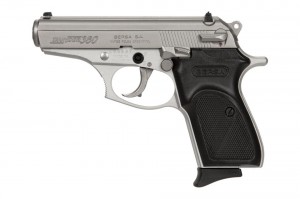 The
Bersa Thunder is a very popular gun for a laundry list of reasons. This
gun is small, high quality, easy to operate, and last but not least
inexpensive.
The
Bersa Thunder is a very popular gun for a laundry list of reasons. This
gun is small, high quality, easy to operate, and last but not least
inexpensive.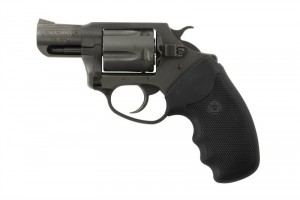 When
it comes to self defense weapons that are safe, straightforward, and
easy to shoot, it’s hard to beat the good old fashioned snub-nose
revolver.
When
it comes to self defense weapons that are safe, straightforward, and
easy to shoot, it’s hard to beat the good old fashioned snub-nose
revolver.






